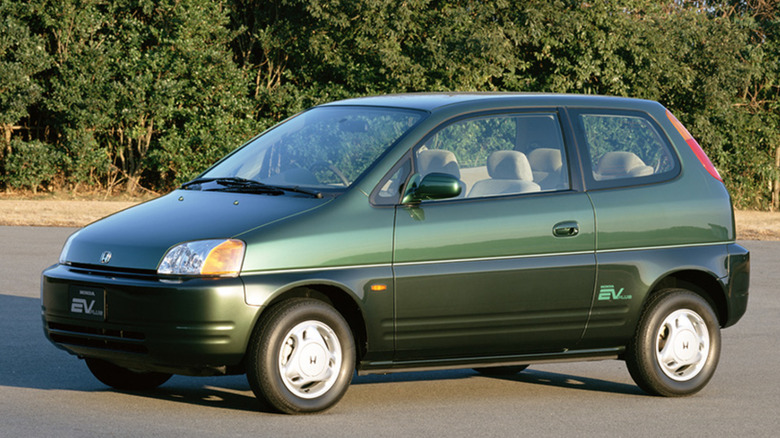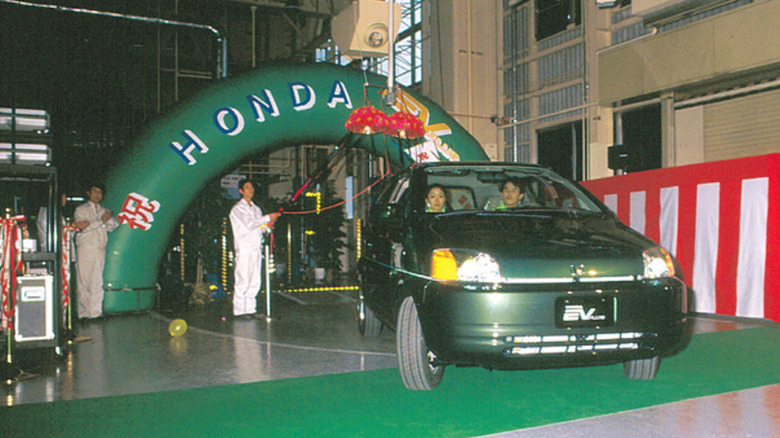What's The Range Of A Honda EV Plus & What Kind Of Motor Was Under The Hood?
Unbeknownst to many, the Honda e was not the automaker's first electric car. It began conceptualizing a battery-electric vehicle in 1987 after General Motors and its solar-powered Sun Racer took the win at the inaugural World Solar Challenge. Still, there's a problem: Nobody at Honda knew where to begin. However, with Honda being Honda, it took whatever existing technology was available and improved it.
First, Honda engineers developed a DC brushless motor that was small enough to be used in a car. Back then, no commercially available electric motor was small, yet powerful enough to propel a vehicle. In addition, Honda's decision to employ a DC brushless motor was unusual for the era, but its efforts were fruitful after many years of development.
Honda is all about efficiency, and its test simulations have shown that a DC motor was the way to go at the time. When Honda launched its first electric car — the EV Plus — in small quantities from 1997 to 1999, Honda brass called it "the finest EV in the world" with its 49 kW DC brushless motor that churned out 66 horsepower. Moreover, it took the Honda EV Plus' debut for competitors to begin noticing the benefits of DC electric motors for automotive applications.
Pioneer of the Ni-MH battery-powered EV
The second most critical innovation in the Honda EV Plus is the battery pack. Back in the day, the early electric cars didn't have energy-dense lithium-ion batteries. Instead, it relied on lead acid batteries. General Motors' much-vaunted EV1 had all the sophisticated electronics available back then, but its fundamental power source came from a collection of cumbersome lead acid batteries.
However, with Honda being Honda, it didn't believe that lead acid batteries were the future of electric cars, which "deteriorate very quickly when left in the heat of summer for a week or two," said Honda. The solution was to create a nickel metal hydride (Ni-MH) battery from scratch. Honda spent two years developing and testing its newest battery chemistry.
When the first EV Plus left the Takanezawa manufacturing plant in April 1997, it became the world's first EV with a Ni-MH power source. With its hi-tech (for the time) batteries, the Honda EV Plus could return an EPA-rated 81 miles of range on a single full charge, but driving gingerly with the air conditioning off could deliver 100 miles of range. When the juice runs out, the EV Plus could recharge in six to eight hours using a 220V onboard conductive charger.
Typical of EVs from the late 80s to the early 90s, the Honda EV Plus was a compliance car for the ZEV (Zero Emission Vehicle) Regulatory Act. This law requires automakers that sell cars in California to have electric vehicles representing at least 2% of total car sales. Production for the Honda EV Plus ended in 1999, and the automaker utilized all the learnings from its development to create fuel-cell electric vehicles (FCEVs).

